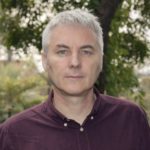Link to Pubmed [PMID] – 26887935
Malar. J. 2016 Feb;15:96
BACKGROUND: Plasmodium vivax is the most widely distributed species causing the highest number of malaria cases in the world. In Brazil, P. vivax is responsible for approximately 84 % of reported cases. In the absence of a vaccine, control strategies are based on the management of cases through rapid diagnosis and adequate treatment, in addition to vector control measures. The approaches used to investigate P. vivax resistance to chloroquine (CQ) were exclusively in vivo studies because of the difficulty in keeping parasites in continuous in vitro culture. In view of the limitations related to follow-up of patients and to assessing the plasma dosage of CQ and its metabolites, an alternative approach to monitor chemo-resistance (QR) is to use molecular markers. Single nucleotide polymorphisms (SNPs) in the multidrug resistance gene pvmdr1 are putative determinants of CQ resistance (CQR), but such SNPs in P. vivax isolates from patients with good response to treatment should be further explored. The aim of this study is to investigate the mutations in the gene, supposedly associated to QR, in P. vivax isolates from successfully cured patients, living in Brazilian endemic and non-endemic areas.
METHODS: Blood samples were collected from 49 vivax malaria patients from endemic (Amazon Basin: 45) and non-endemic (Atlantic Forest: four) Brazilian regions and analysed for SNPs in the CQR-related P. vivax gene (pvmdr1), using PCR-based methods.
RESULTS: Among the 49 isolates genetically characterized for the gene pvmdr1, 34 (70 %) presented at least one mutation. T958M mutant alleles were the most frequent (73 %) followed Y976F (15 %) and F1076L (12 %). Single mutation was detected in 24 (70.5 %) isolates and double mutations in ten (29.5 %). The most common single mutant genotype was the 958M/Y976/F1076 (79 %), followed by 976F/F1076 (21 %) whereas 958M/Y976/1076L (60 %) and 976F/1076L (40 %) double mutant genotypes were detected. Single mutant profile was observed only in isolates from Amazon Basin, although double mutants were found both in the Amazon and Atlantic Forest regions. Interestingly, the genotype 958M/Y976/1076L was present in all isolates from the Atlantic Forest in the Rio de Janeiro State.
CONCLUSIONS: Considering that primaquine (PQ) efficacy is highly dependent on concurrent administration of a blood schizontocidal agent and that PQ could not circumvent CQR, together with the fact that no pvmdr1 mutation should be expected in successfully cured patients, these findings seem to indicate that the pvmdr1 gene is not a reliable marker of CQR. Further investigations are needed to define a reliable molecular marker for monitoring P. vivax CQR in P. vivax populations.

